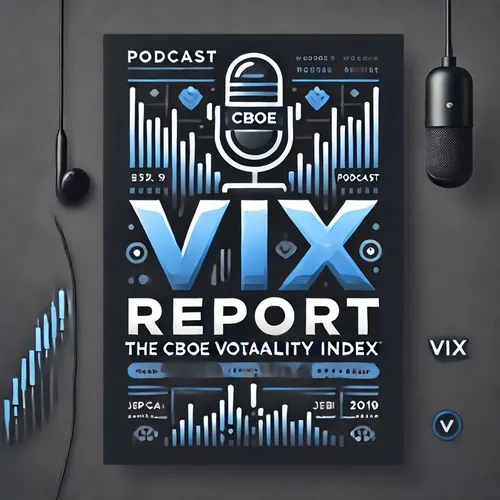Volatility Index Hits "Sale Price" as Investor Uncertainty Eases, Signaling Relative Market Calm
- Author
- QP-1
- Published
- Sat 23 Aug 2025
- Episode Link
- https://www.spreaker.com/episode/volatility-index-hits-sale-price-as-investor-uncertainty-eases-signaling-relative-market-calm--67486818
The Cboe Volatility Index, commonly referred to as the VIX or the "fear gauge," is currently at a "sale price" of 14.22, as per Cboe’s official dashboard for August 23, 2025. This marks a significant decline from the previous market day’s closing value of 16.60, representing a percent change of minus 14.34 percent. The index is also lower compared to its level of 17.55 recorded one year ago, underscoring a retreat in volatility over the longer term based on YCharts.
The VIX measures expected volatility in the S&P 500 over the next 30 days by analyzing a wide range of option prices on the index. When the VIX moves sharply, it’s usually because investors anticipate bigger swings in the market, either due to economic data releases, company earnings, geopolitical events, or changes in monetary policy.
This latest drop in the VIX percentage points to a notable easing in investor uncertainty. Several factors could be driving this move. First, recent financial news has reported steadying inflation metrics and continued signals from the Federal Reserve that interest rates are likely to remain unchanged in the near term, which tend to calm market nerves. Second, the current earnings season for major US corporations has largely delivered results in line with analyst expectations, reducing surprise and uncertainty. Third, there have not been significant headlines about geopolitical tensions or abrupt market-moving economic shocks in the last week, further contributing to the sense of stability. All these elements collectively support a downward trend in volatility.
Looking at longer-term patterns, this decrease follows a brief uptick earlier in the week, when the VIX had climbed as high as 16.60. That rise was likely linked to renewed discussions around rate policy and some signs of economic slowdown in overseas markets. The snapback lower now implies renewed confidence among investors or at least a temporary lull in anxiety. Over the past year, the VIX has trended downward, consistent with a market that has largely digested major uncertainties and entered a period of relative calm.
Market watchers should keep in mind, however, that low volatility readings don’t necessarily guarantee stability going forward. The VIX is known for sudden reversals, especially if unexpected economic or geopolitical news emerges. Additionally, periods of extremely low volatility can sometimes precede bigger market reactions if conditions quickly change. Traders and long-term investors alike often use the VIX as a signal to adjust their hedging strategies or anticipate broader market moves.
Thanks for tuning in. Come back next week for more updates, insights, and analysis. This has been a Quiet Please production. For more, check out Quiet Please Dot A I.
For more http://www.quietplease.ai
Get the best deals https://amzn.to/3ODvOta
